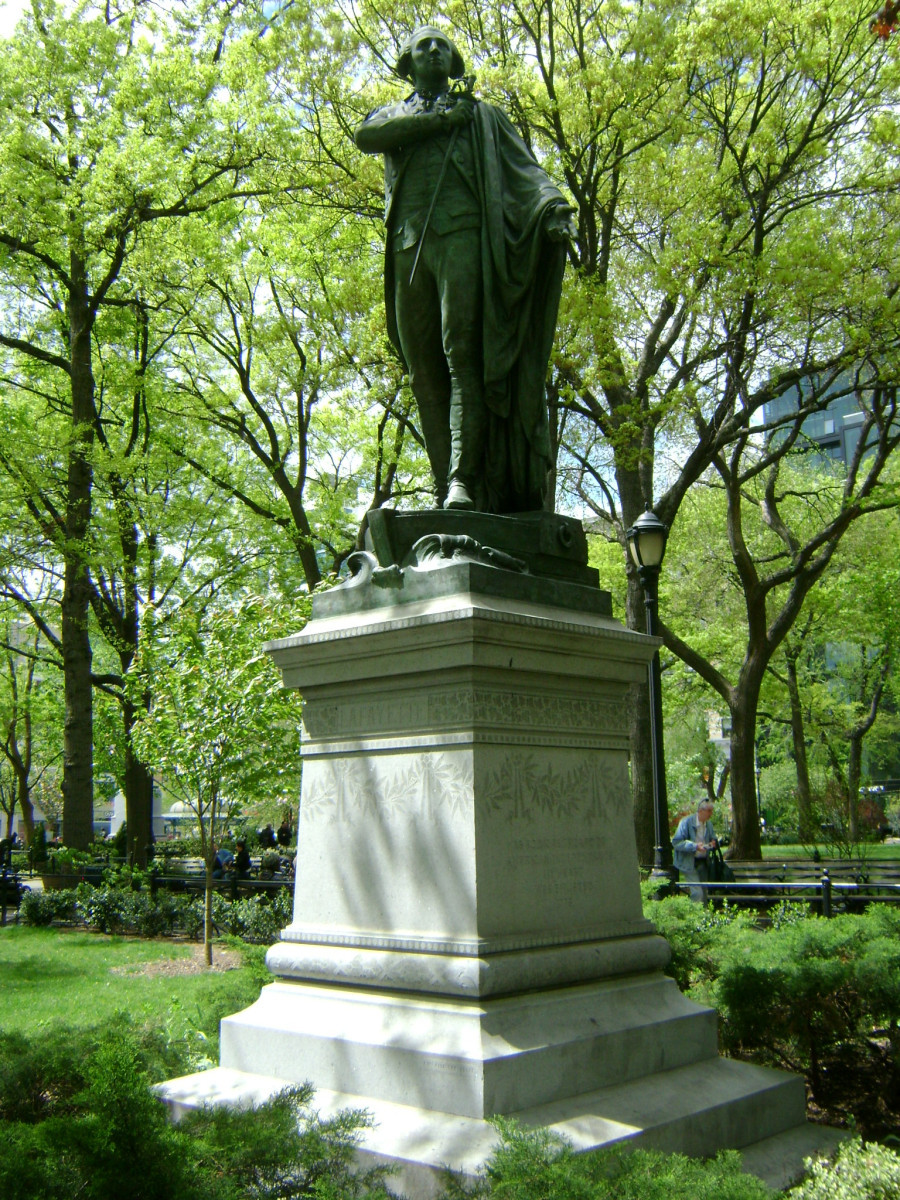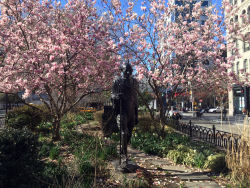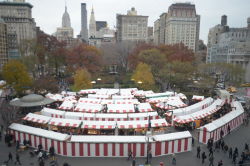Union Square Park
View all monuments in NYC Parks, as well as temporary public art installations on our NYC Public Art Map and Guide.
Marquis de Lafayette
| Artist: | Frederic Auguste Bartholdi |
| Dedicated: | September 6, 1876 |
| Location: | Park Avenue South at 16th Street |
Artwork History
This bronze sculpture depicts the Marquis de Lafayette (1757–1834), the French-born general who fought on behalf of American rebels during the American Revolution. Cast in 1873 and dedicated in 1876, the piece is a token of appreciation from the French government for aid New York provided Paris during the Franco-Prussian War (1870-1) -- thus the inscription “in remembrance of sympathy in times of trial.”
French statesman and military leader Marie Joseph Paul Yves Roch Gilbert Du Montier Lafayette is best remembered for his role in the Revolutionary War. Sympathetic to the American cause, he aided the colonists through the provision of experienced military leadership. The Frenchman quickly became a favorite of General George Washington, who appointed him Major General in the Continental Army during 1777. The next year, Lafayette returned to France following the formal agreement of the France/United States alliance against Great Britain. Once in France, he actively lobbied for the allotment of increased military and financial aid for the Colonies. In 1780, Marquis de Lafayette returned to America and served valorously in the Virginia campaign, which forced the surrender of Lord Charles Cornwallis in 1781.
As a true proponent of democracy, Lafayette assumed a leading role in the French Revolution of 1789. He became a member of the National Assembly, from which position he prepared the Declaration of the Rights of Man, a bill of rights based on the Virginia Declaration of Rights (also a major source for the American Declaration of Independence). He commanded the French National Guard and joined the Feuillants, a moderate political party that advocated a constitutional monarchy. He gained leadership of a French division in 1792 in the war against Austria. Chastised by the Jacobins within his unit (who were far more radical than the Feuillants) Lafayette fled to Flanders where Austrian authorities imprisoned him for five years. Upon his return to France, he avoided the dictatorial politics of Napoleon Bonaparte. Following Napoleon’s defeat at Waterloo, Lafayette resumed his political career by serving as a member of the Chamber of Deputies in 1815 and from 1818 to 1824. He toured the United States in 1824 during which time Congress voted him a gift of $200,000 and a large tract of land. Marquis de Lafayette, the statesman and general, maintained the convictions of democracy, social equality, and religious freedom throughout the remainder of his life.
The larger-than-life-sized figure was sculpted by Frédéric-Auguste Bartholdi (1834–1904), who also designed the Statue of Liberty (1886), another gift from the French government that figures prominently in New York Harbor. The granite pedestal designed by H.W. DeStuckle was donated by French citizens living in New York. Lafayette appears in another Bartholdi sculpture at Lafayette Square in Upper Manhattan that depicts him shaking General George Washington’s hand. Lafayette is also honored in Brooklyn’s Prospect Park with a bas-relief on a stele by Daniel Chester French, who designed the figure of Abraham Lincoln at the Lincoln Memorial in Washington, D.C.
In 1991 the monument was conserved through the Adopt-A-Monument Program, a joint venture of the Municipal Art Society, Parks and the New York City Art Commission.
Artwork Details
| Description: | Portrait statue on pedestal |
| Materials: | Bronze, polished Quincy granite |
| Dimensions: | H: 15' W: 6' D:6' |
| Donor: | French residents in New York |
Inscription
NORTH SIDE: "AS SOON AS I HEARD OF / AMERICAN INDEPENDENCE,/MY HEART WAS ENLISTED" / 1776/
SOUTH SIDE; TO THE CITY OF NEW YORK, / FRANCE, / IN REMEMBRANCE OF SYMPATHY / IN
TIMES OF TRIAL / 1870-71 /
FRONT: LAFAYETTE
Please note, the NAME field includes a primary designation as well as alternate namingsoften in common or popular usage. The DEDICATED field refers to the most recent dedication, most often, butnot necessarily the original dedication date. If the monument did not have a formal dedication, the yearlisted reflects the date of installation.
For more information, please contact Art & Antiquities at (212) 360-8163.
Check out your park's Vital Signs
Clean & Safe
Green & Resilient
Empowered & Engaged Users
Share your feedback or learn more about how this park is part of a
Vital Park System





